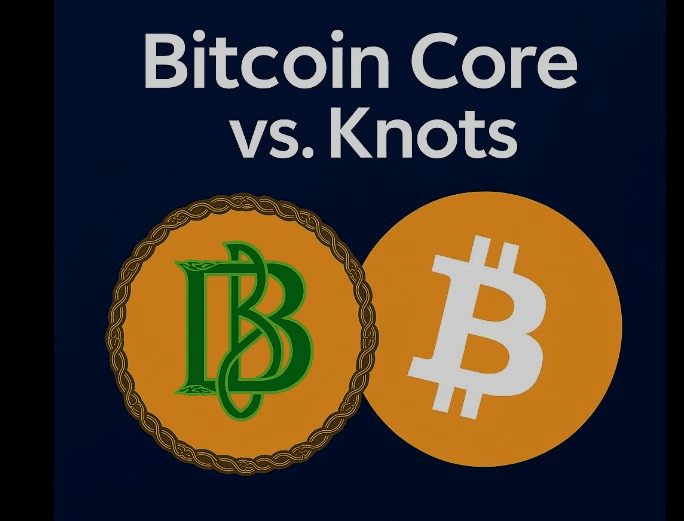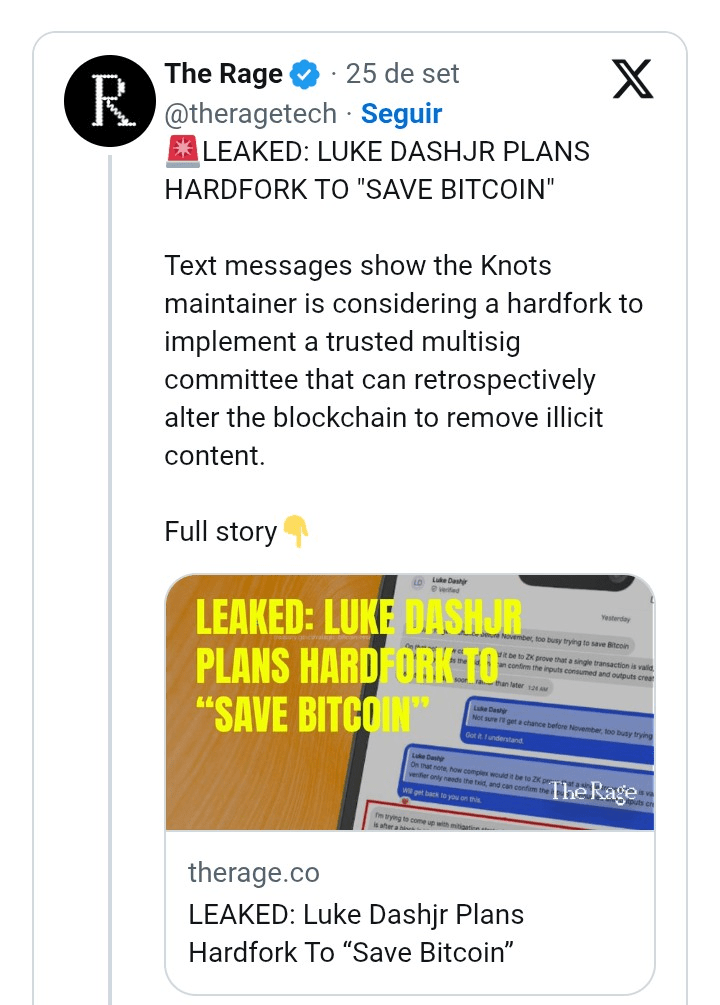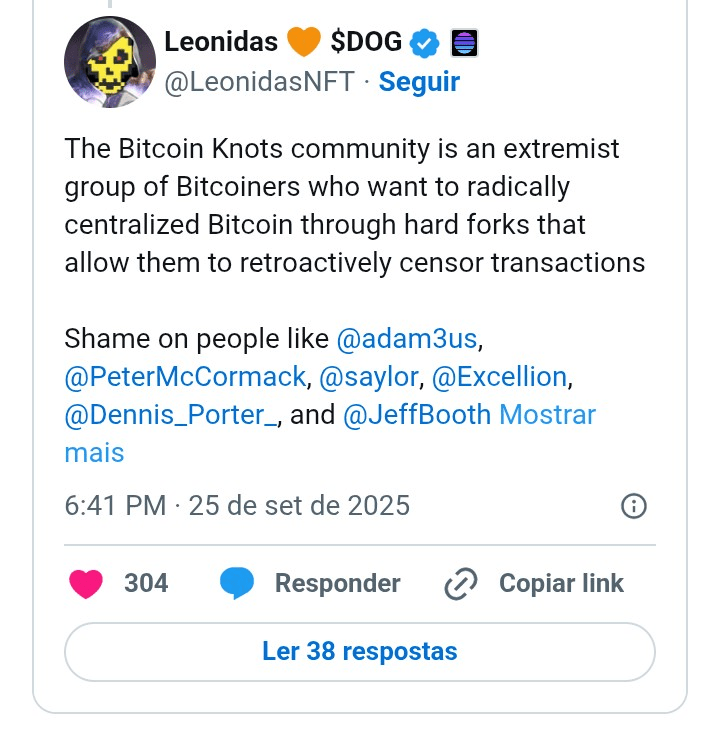
In recent months, a dispute of a technical and ideological nature has stirred the Bitcoin community. What seemed to be merely a divergence between developers and node operators has gained prominence, as it brings into play different interpretations about the direction of the network.
On one side is Bitcoin Core, the main reference for transaction validation and widely adopted throughout the ecosystem. On the other, Bitcoin Knots is gaining strength, a derivative of Core that adopts a stricter stance on data filtering.
Tension increased after a Core update that altered parameters of OP_RETURN, an area of the transaction script used to record information on the blockchain. For Core supporters, the change reinforces the neutrality and evolution of the protocol. On the other hand, Knots defenders see risks: in their view, this could transform Bitcoin into a repository of arbitrary data, diverting it from its purpose as digital currency.
Deep down, the dispute reflects distinct philosophies. Core believes that the fee market should be the natural arbiter to decide whether alternative uses of the blockchain are viable. On the other hand, Knots, primarily led by developer Luke Dashjr, bets on filters to block what it classifies as "spam" transactions.
This stricter stance seeks to protect the network from speculative uses related to memecoins and shitcoins, but it also raises questions about censorship and centralization. The debate, therefore, goes beyond the technical: it concerns who should draw the lines of Bitcoin and what, in fact, is each node's responsibility in the network.
Why is the crypto world in conflict?
The current tension began with version 30 of Bitcoin Core, which removed the default limit of 80 bytes for OP_RETURN. Until then, this barrier discouraged the excessive use of embedded data in transactions. The change was defended by Core developers as a natural update, as new legitimate uses may require more space — such as recording cryptographic proofs or document hashes. But the reaction was immediate. For critics, this decision opens the door for network congestion with irrelevant information and even illicit content permanently recorded on the blockchain.
At this point, Knots found fertile ground. By reinforcing its filtering policy and rejecting transactions seen as non-monetary, the client became the symbol of resistance to this flexibility. In just a few months, it gained significant participation in the network: already representing between 15% to 20% of public nodes.
The growth caught the attention of historical figures in the ecosystem, such as Cobra, maintainer of the Bitcoin.org site, who warned of the risk that Knots could threaten Core's status as a reference implementation. Meanwhile, Knots defenders accuse Core of abandoning monetary principles in the name of external interests and an alleged corporate capture.
The debate gained even more political contours with the publication of critical texts, such as that of engineer Jameson Lopp, who accused the project of being too dependent on the figure of Dashjr and, therefore, not very decentralized.
In the article, Lopp emphasizes that Bitcoin's strength has always been in the absence of defined leaders and the diversity of implementations, which reduces the risk of critical failures or arbitrary decisions. According to him, by concentrating much of the responsibility on a single developer, Knots creates precisely the type of vulnerability that Bitcoin was born to avoid. In his words, it is a project that does not present the maturity or robustness necessary to be considered a serious alternative to Core.
He also warns that Dashjr's history includes episodes of security failures and controversial proposals, which reinforces the perception that Knots is more of a protest tool than a long-term solution. For Lopp, supporting Knots could even make sense as a way to signal dissatisfaction with the direction of Core, but trusting it as a major implementation would risk the stability and credibility of the entire network.
The cross accusations are not limited to technical issues. Discussions about the actual count of Knots nodes, suspicions of statistical manipulation, and even leaks of private messages involving hard fork proposals further inflamed emotions. On social media, it is not uncommon to see users labeling the other side as traitors to the original principles of Bitcoin, showing that the debate, once restricted to email lists and code forums, now occupies a central space in the community's imagination.

 Why is this fight important?
Why is this fight important?
What is at stake is much more than the size of a data field. The dispute between Core and Knots touches the core of Bitcoin governance. If Core's neutrality is maintained, the network remains open to diverse uses, with the assurance that the fee market will naturally filter the excesses.
On the other hand, if Knots' vision spreads, it could consolidate a model of "local control," where each node sets harder barriers against non-monetary transactions. The consequence would be a less uniform environment, with the risk of fragmentation in the propagation of transactions.
This division also calls into question decentralization. Core is accused of concentrating decisions in a few maintainers, while Knots heavily relies on the leadership of a single developer. If one of them gains hegemony, the network may lose implementation diversity, an element considered vital to resist failures or attempts at capture.
At the same time, there is the question of trust: if operating a node becomes more expensive or complex, ordinary users may give up, further centralizing the network in the hands of large players.
Although there are no immediate signs of a hard fork, the dispute indicates a moment of inflection. Bitcoin has always presented itself as a neutral system, resistant to censorship and governed by its users. The clash between Core and Knots shows that, in practice, these definitions are far from unanimous. The outcome will not only shape the technical limits of the network but also define who truly has the loudest voice in the protocol that has challenged the global financial system for over 15 years.
